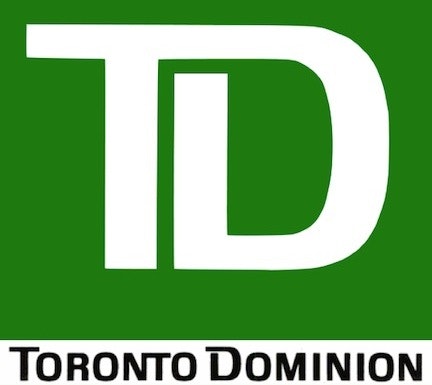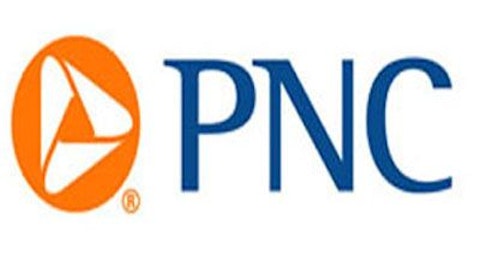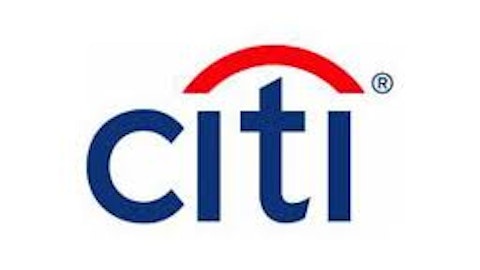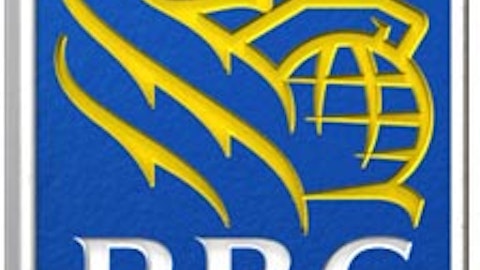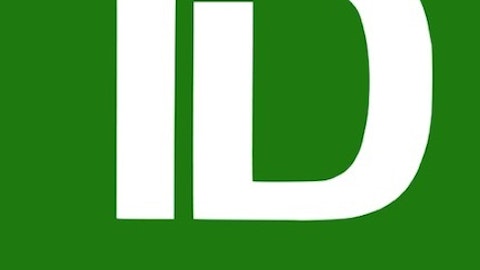Since 1790, the American bank Bank of Montreal (USA) (NYSE:BMO)ing system has experienced sixteen different financial crises, in contrast, the Canadian banking system has experienced none so far. This makes a big statement to potential investors about the stability of the Canadian financial system over the tumultuous American banking system.
The recent subprime crisis, which led to a global economic meltdown eventually resulted in heavy losses for American banks, and ultimately the collapse of Lehman Brothers as well as many other smaller banks. Nonetheless, the Canadian banks weathered the storm extremely successfully. It is noteworthy that the Canadian financial system exhibited its sparkling ability to manage money, which was even acknowledged by U.S President Barack Obama.
Robust fundamentals
Toronto-Dominion Bank (USA) (NYSE:TD) is a Canadian multinational financial services corporation headquartered in Toronto. It is the Sixth largest bank in North America by market capitalization, and second largest bank by assets amongst its Canadian Peers.
The bank, with its carefully designed segment portfolio, has demonstrated consistent growth over the past five years, with adjusted earnings and earnings per share growing at a CAGR of 11% and 5% respectively.The total shareholder return has exhibited a CAGR of 10% during the past ten years.
In addition, the bank has a history of consistent dividend payouts, with an 11% annual growth in dividends of over the past twenty years. The second quarter results were solid, with earnings from retail business amounting to $1.6 billion, taking the total earnings of the bank to an impressive $ 1.8 billion, a 6% Year-on-Year growth.
It should be noted by potential investors that BASEL III norms essentially deals with strengthening the banks financial system by pressing standards for Capital adequacy, stress testing, and market liquidity risk. The BASEL III common equity Tier 1 ratio stands at 7%, whereas Toronto Dominion’s ratio stands at around 8.8%, which further underpins the financial strength of the institution.
Strategic acquisitions to expand footprint
Moving further, the bank has made several initiatives in order to expand its base in the US. Toronto-Dominion Bank (USA) (NYSE:TD) recently closed its acquisition of U.S.-based Epoch Holding, and its fully owned subsidiary Epoch Investment Partners, for a mammoth $669 million in cash. The closure of this deal reinforces the company’s strategy to expand its footprint in the U.S. wealth management sector.
Toronto-Dominion Bank (USA) (NYSE:TD) further acquired the credit card portfolio from Target Corporation (NYSE:TGT) for a whopping $5.9 billion, by entering into a seven-year agreement which makes it an exclusive issuer of Target Corporation (NYSE:TGT)-branded Visa and private label consumer credit cards to its U.S. consumers.
Such acquisitions vividly exhibit Toronto-Dominion Bank (USA) (NYSE:TD)’s approach towards establishing its name in the U.S. market.
Competitive landscape of Canadian banks
Toronto-Dominion Bank (USA) (NYSE:TD) has several competitors in the banking sector, however, its main competitors are Royal Bank of Canada (NYSE:RY), The Bank of Nova Scotia (USA) (NYSE:BNS) and Bank of Montreal (USA) (NYSE:BMO)
Royal Bank of Canada (NYSE:RY), commonly called RBC, is the largest bank in Canada with a market capitalization of $87 billion. During the second quarter of 2013, the company posted an adjusted net income of $1.97 billion, which is a 13% year-on-year increase. The growth reported in the net income was predominantly due to robust performance in all business segments and an overall optimism in the Canadian market.
Furthermore, by reporting an all-in capital equity tier I ratio of 9%, which is significantly above the minimum requirements pronounced by the BASEL III norms, the bank has clearly showcased its financial stability.
Royal Bank of Canada (NYSE:RY) is fairly active with its M&A strategy, as it recently acquired Ally Financial’s Canadian unit for $3.7 billion, which will bolster the company to a leadership position in the Canadian automotive finance segment.
To the delight of its shareholders, the company reported a healthy 16% return on equity, owing to strong organic growth in all primary business divisions. Its global wealth management segment turned out to be an outstanding performer, as it reported record earnings during the quarter.
The Bank of Nova Scotia (USA) (NYSE:BNS) is now completely focused on strengthening its business on its home soil, as it recently acquired ING direct for $ 3.1 billion, which will further enable the company to bolster its presence across Canada.
Bank of Montreal (USA) (NYSE:BMO) is another significant competitor to Toronto dominion. Like all other players in the market, Bank of Montreal also witnessed a successful second quarter. The company reported an adjusted net income of approximately $1 billion, which is a 2% year-over-year increase. Further, it sustained a strong capital position with a BASEL III common equity tier I ratio of 9.7%.
Bank of Montreal (USA) (NYSE:BMO) reported robust performance across all its segments, particularly the capital market division, where the firm experienced a 19% year-on-year growth in net income.
Like its is primary competition, Bank of Montreal is highly active on the M&A front, as it recently acquired Aver Media LP, a leading TV media lending company based in Canada . According to the bank’s management it was a strategic acquisition, which is expected to add immense value to both customers and shareholders.
Conclusion
Toronto Dominion operates in a highly competitive environment; therefore it becomes essential for it to focus on organic growth coupled with strategic acquisitions in order to continue reporting robust numbers. With Europe in deep economic recession and the U.S. on its way to economic consolidation, Toronto Dominion must make inroads into new and fast growing markets. At present, it has a growing presence across all developed markets; nevertheless the bank should now switch its focus in order to enhance its footprint across the emerging economies.
Considering the relative health of the Canadian financial institutions over its U.S. based counterparts, I believe Toronto Dominion possesses strong fundamentals and the ability to sustain robust profits in the long run.
Ashit Gulati has no position in any stocks mentioned. The Motley Fool recommends The Bank of Nova Scotia (USA). Ashit is a member of The Motley Fool Blog Network — entries represent the personal opinion of the blogger and are not formally edited.
The article How Is Toronto Dominion Positioned in the Canadian Banking Sector? originally appeared on Fool.com is written by Ashit Gulati.
Copyright © 1995 – 2013 The Motley Fool, LLC. All rights reserved. The Motley Fool has a disclosure policy.
